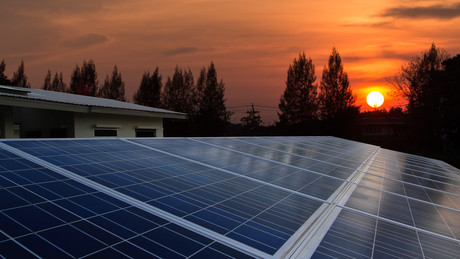Another 17 off-grid communities to go solar in NT

Construction on the Solar Energy Transformation (SETuP) project Tranche Two will begin this month.
Tranche Two, expected to be completed by November this year, will see 5.6 MW of solar PV rolled out to a further 17 communities across the Territory from Finke near the South Australian border to the Tiwi Islands.
Solar PV will be integrated with diesel generators at 15 sites including a 1 MW solar system at the Tiwi Island community of Wurrumiyanga, which will ultimately supply electricity to three communities on Bathurst and Melville Islands via an interconnection project.
On completion of Tranche Two, the SETuP program will provide 10 MW of solar photovoltaic power into the energy mix of 28 remote off-grid communities across the NT.
Last year, Tranche One involved integrating 3.325 MW of solar PV into diesel power systems in an initial 10 remote Indigenous communities.
In April, alongside Tranche One, Daly River became the first Northern Territory remote community to be partially powered by solar and battery, as a 2 MWh lithium-ion battery with a 0.8 MW peak output was installed alongside 3200 solar panels.
The Australian Renewable Energy Agency (ARENA) previously announced $31.5 million in funding towards SETuP, jointly funded by the Northern Territory Government and managed by Power and Water Corporation (PWC).
ARENA CEO Ivor Frischknecht said Tranche Two would complete the rollout of this ambitious project to bring renewable energy to off-grid and offshore communities.
“This project will reduce the reliance on diesel which is costly and subject to price volatility, creates job opportunities in remote communities and provides renewable energy which can be expanded in the future. Each community will be operationally and technically ready to plug in more solar and storage as costs of renewable technologies fall. Over time, this could lead to very high-percentage renewable power, driven by the lower cost of renewable energy,” he said.
Power and Water Chief Executive Michael Thomson said: “This project demonstrates how delivery of cost-effective, renewable energy may be employed to provide reliable power to remote communities, where both energy demand and costs are high.
“Reducing our reliance on diesel fuel in remote locations makes economic and environmental sense. As these hybrid systems combine existing Power and Water assets with clean technologies, we are able to ensure service remains consistent while making a 15% saving on diesel fuel.”
Aust solar farms to deploy Canadian anti-hail tech
Australian energy retailer Flow Power is teaming up with Canadian Solar to deploy the...
Praise for Senate committee report into electrification
Rewiring Australia has welcomed a report into residential electrification carried out by a...
Endeavour Energy launches new community battery program
76 new batteries will be delivered across the Illawarra, South Coast, Greater Western Sydney,...




